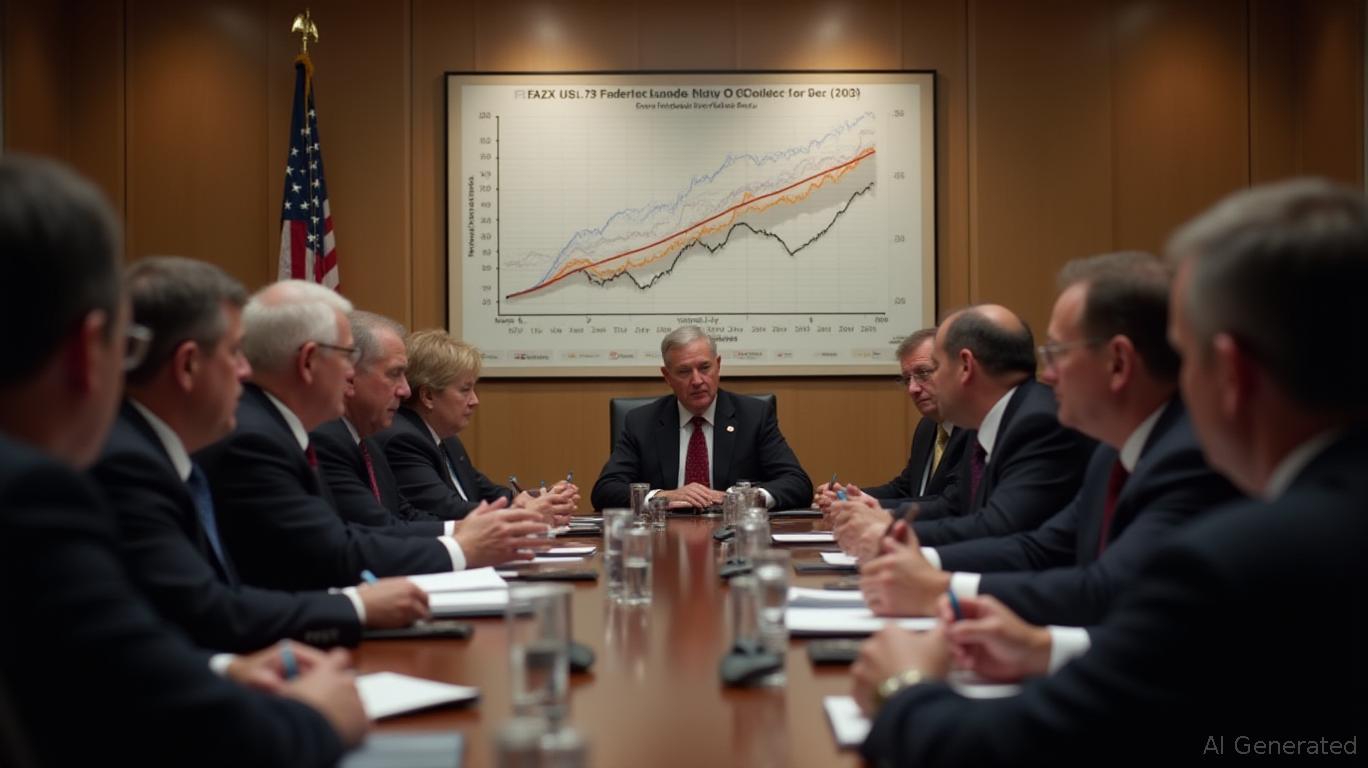The Fed's Delicate Balancing Act: Navigating Tariff-Driven Uncertainty and the Path to Rate Relief
The Federal Reserve's June 2025 decision to hold its federal funds rate at 4.25%–4.5% underscores a pivotal dilemma: how to balance the risk of resurgent inflation from President Trump's tariffs against the threat of an economic slowdown. This “wait-and-see” approach, while
in theory, introduces significant uncertainty for investors. The Fed's reluctance to cut rates—even as markets anticipate two reductions by year-end—highlights the tension between data-driven caution and political pressure. For investors, the path forward requires navigating these crosscurrents while positioning portfolios for potential September rate relief.
The Fed's Dilemma: Tariffs as a Double-Edged Sword
The Fed's stance is anchored by conflicting signals. On one hand, core PCE inflation, a key gauge of underlying price pressures, has inched toward the 2% target but remains elevated at 2.4%. On the other, tariffs—now averaging 10% across trading partners and up to 54% on Chinese imports—are inflating input costs for businesses and consumer goods. This creates a “stagflationary” risk: higher prices without corresponding economic growth. Fed officials, including Vice Chair Philip Jefferson, have warned that tariffs could add 1.0 percentage point to inflation by year-end while dragging GDP down by 1.0% in 2025.
The Fed's “wait-and-see” strategy reflects its dual mandate: maintaining price stability while avoiding a premature easing that could reignite inflation. Yet this approach risks stifling growth. The Fed's own projections now anticipate 1.7% GDP growth for 2025—a downgrade from earlier estimates—and core inflation of 2.8%, suggesting it may need to act sooner than markets expect.
Ask Aime: How can I navigate the current economic uncertainty and make informed investment decisions with the Federal Reserve's cautious stance and the conflicting signals from tariffs and inflation?
Market Implications: The Cost of Uncertainty
Investors are pricing in a September rate cut, with the CME FedWatch Tool assigning a 79% probability of a reduction by then. However, the Fed's hesitancy has kept borrowing costs elevated: mortgage rates linger near 7%, and credit card rates exceed 20%. This tight monetary policy is already dampening consumer spending, with retail sales flattening in Q2.
Equity markets, meanwhile, are split. Rate-sensitive sectors like consumer discretionary and technology have underperformed as borrowing costs remain high, but they could rally if the Fed signals easing. Conversely, sectors exposed to tariffs—such as automotive and industrial goods—face margin pressures. The S&P 500's mixed performance in 2025 reflects this divide.
Risks of Delayed Rate Cuts
The Fed's delay carries two primary risks. First, if inflation spikes further due to tariffs, the central bank may be forced to raise rates again—a move that would derail equities and deepen economic contraction. Second, if growth weakens more than expected, delayed cuts could prolong the pain for households and businesses. The Fed's internal divisions—evident in its June meeting minutes—highlight the difficulty of forecasting these outcomes.
Investment Strategy: Positioning for September Relief
Investors should prepare for a potential September rate cut, while hedging against inflation and growth risks. Here's how to navigate this landscape:
Overweight Consumer Discretionary: Companies with pricing power and strong balance sheets—such as Amazon (AMZN) and Home Depot (HD)—could benefit from a rate-induced spending rebound. These firms also have the flexibility to offset tariff costs through automation or geographic diversification.
Favor Technology Stocks: Tech giants like Microsoft (MSFT) and NVIDIA (NVDA) are less exposed to tariffs and have leveraged AI-driven efficiencies to maintain margins. A rate cut would reduce their borrowing costs and boost valuations, as tech's price-to-earnings ratios remain historically low relative to growth.
Underweight Rate-Sensitive Sectors: Utilities (XLU) and REITs (IYR), which depend on low rates, face headwinds if the Fed delays cuts. Rotate into defensive sectors like healthcare (XLV) or consumer staples (XLP) only if inflation remains stubborn.
Monitor Inflation Metrics: Track core PCE inflation and wage growth. A sustained dip below 2.5% could accelerate the Fed's easing timeline, while a rise above 3% would force caution.
Hedge with Short-Term Treasuries: Consider short-duration Treasury bonds (SHY) to protect against volatility while waiting for rate cuts.
Conclusion: Caution and Opportunism in Equal Measure
The Fed's “wait-and-see” approach is a high-wire act. Investors must balance the likelihood of September rate relief against the risk of inflation spiraling higher. By overweighting resilient sectors like consumer discretionary and technology, portfolios can capture upside while avoiding overexposure to tariff-hit industries. The Fed's next move will likely hinge on data—particularly inflation and employment trends—through July. For now, patience and diversification remain the best defenses against uncertainty.

Comments
No comments yet